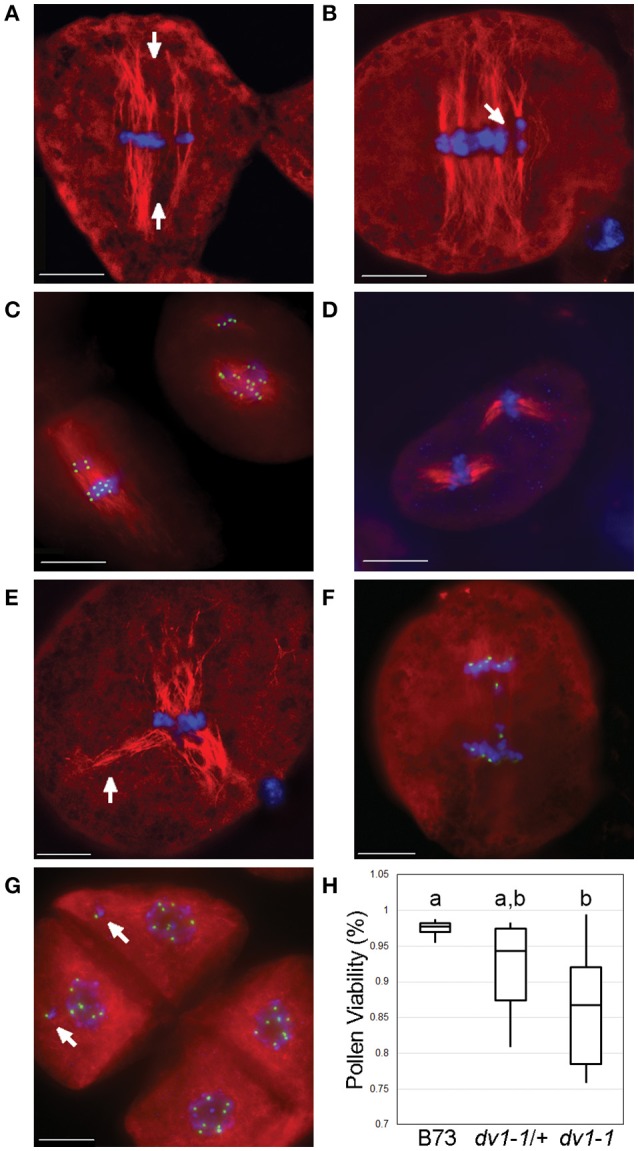Figure 3.

Rarely-observed severe effects of dv1-1 include multiple spindles and multinucleate daughter cells. Meiocytes were stained using immunofluorescence with a primary antibody specific to α-tubulin shown in red and CENP-C shown in green. DNA (DAPI) is shown in blue. Scale bars for each image represent 10 μm. (A) Multi-spindle dv1-1 cell with metaphase alignment errors. Poor congression of chromosomes along the metaphase plate in a dv1-1 cell with parallel spindles in metaphase separated by space (arrows); (B) Early anaphase of a similar dv1-1 cell with parallel spindles and chromosomes separated by space (arrow); (C) Cells with severe errors in spindle assembly. Cell on the left appears to be a fusion of a small and a large spindle in the process of correction. Cell on the right shows two distinct spindles, the larger of which appears as a chaotic array of early prometaphase; (D) Two separate spindles of approximately the same size in a dv1-IG cell; (E) Tri-polar spindle of a dv1-1 cell at metaphase showing separated microtubules (arrow) with congressed chromosomes; (F) Lagging chromosomes during anaphase in a dv1-1 cell; (G) Tetrad-stage cells showing examples of mininuclei (arrows), isolated chromosomes not a part of the nucleus; (H) Pollen shows a decreased viability in both dv1-1 homozygotes and heterozygotes. Groups of statistical significance are designated with lowercase letters. The heterozygous phenotype was not statistically significant from either wild type or dv1-1 homozygous. (n = 7–10 plants per genotype, 500 pollen grains per plant; α = 0.05).
